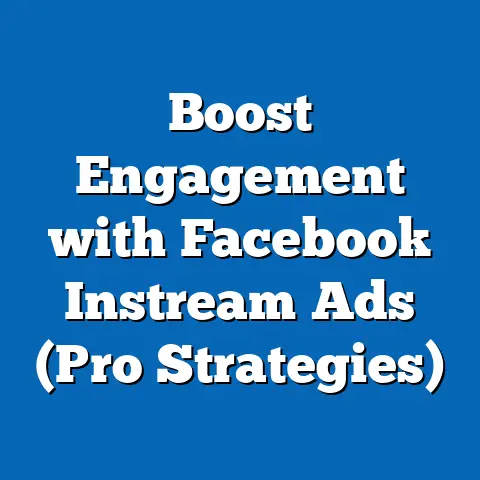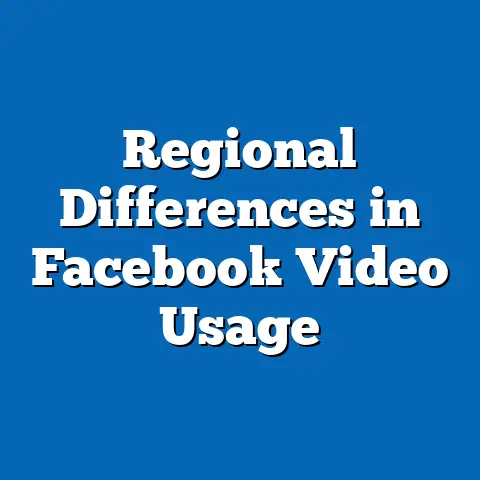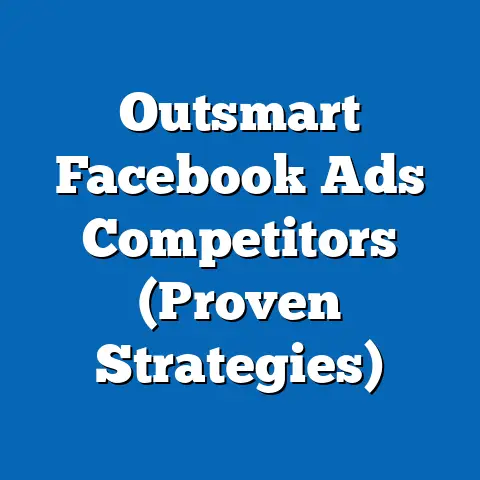Unlock Facebook Ads Costs in India (Essential Insights Revealed)
In an era where digital connectivity shapes consumer behavior, businesses in India are increasingly turning to platforms like Facebook to reach their target audiences. Amidst growing awareness of sustainability, many brands are also aligning their advertising strategies with eco-conscious choices, integrating messages of environmental responsibility into their campaigns. This article delves into the costs of running Facebook Ads in India, exploring key statistics, trends, demographic patterns, and actionable insights for businesses aiming to optimize their digital marketing budgets while staying mindful of broader societal values.
According to a 2022 report by Statista, India is home to over 340 million Facebook users, making it the largest market for the platform globally. A survey by Nielsen in 2021 revealed that 62% of Indian consumers are more likely to support brands that promote sustainability and eco-friendly practices. As digital advertising intersects with conscious consumerism, understanding the financial aspects of platforms like Facebook becomes critical for crafting impactful, value-driven campaigns.
The Rise of Digital Advertising in India
India’s digital landscape has witnessed exponential growth over the past decade, fueled by affordable internet access and widespread smartphone adoption. As of 2023, the country boasts over 820 million internet users, with 67% of them accessing social media platforms daily, according to the DataReportal Digital 2023 India report. Facebook remains a dominant player, with a penetration rate of nearly 40% among internet users, offering businesses an unparalleled opportunity to connect with diverse audiences.
Digital advertising expenditure in India is projected to reach $7.9 billion by 2025, growing at a compound annual growth rate (CAGR) of 18.2%, as reported by GroupM’s “This Year Next Year” 2023 forecast. Within this, social media advertising, particularly on platforms like Facebook, accounts for approximately 30% of the total spend. This surge reflects a shift from traditional media to digital channels, driven by the ability to target specific demographics with precision.
Businesses are also increasingly weaving eco-conscious narratives into their campaigns. A 2022 Kantar study found that 58% of Indian marketers believe integrating sustainability into advertising boosts brand loyalty, especially among younger consumers. This trend underscores the need to balance cost-efficiency with meaningful messaging in platforms like Facebook.
Understanding Facebook Ads Costs in India
Facebook Ads operate on a dynamic pricing model influenced by factors such as audience targeting, ad placement, campaign objectives, and competition. In India, costs are generally lower compared to global averages due to the country’s competitive market and lower cost-per-click (CPC) rates. However, these costs can vary widely based on industry, location, and seasonality.
According to a 2023 analysis by SocialPilot, the average CPC for Facebook Ads in India ranges between ₹0.50 and ₹2.50 ($0.006 to $0.03 USD), significantly lower than the global average of $0.97 USD reported by WordStream. Cost-per-thousand-impressions (CPM) typically falls between ₹4 and ₹30 ($0.05 to $0.36 USD), depending on the target audience and ad format. For comparison, industries like e-commerce and finance often face higher CPCs (₹2-₹5) due to intense competition, while niche sectors like local services may see costs as low as ₹0.30 per click.
The methodology behind these figures involves aggregating data from ad campaigns across multiple sectors, as tracked by tools like SocialPilot and AdEspresso. These platforms analyze real-time bidding data from Facebook’s ad auction system, where advertisers compete for impressions based on budget and relevance scores. Understanding these costs is crucial for businesses aiming to maximize return on investment (ROI) while aligning with trends like eco-conscious branding.
Factors Influencing Facebook Ads Costs in India
Several variables impact the cost of running Facebook Ads in India, making it essential for advertisers to tailor their strategies accordingly. Below, we break down the key factors:
1. Target Audience and Demographics
The specificity of the audience plays a significant role in determining costs. Targeting a broad audience, such as all users aged 18-65, often results in lower CPMs, averaging ₹5-₹10. However, narrowing down to a specific demographic—like urban women aged 25-34 interested in sustainable fashion—can increase CPMs to ₹20-₹30 due to higher competition for niche segments.
Data from Facebook’s Audience Insights (2023) shows that 70% of Indian users are male, while female users, though fewer in number, often yield higher engagement rates (3.2% vs. 2.5% for males). Age-wise, the 18-34 demographic dominates with 65% of the user base, making it a cost-effective yet competitive segment for advertisers.
2. Ad Placement and Format
Ad placement significantly affects costs, with placements in the Facebook News Feed typically costing 20-30% more than Stories or Marketplace ads due to higher visibility. Video ads, which have grown in popularity (with 45% of Indian users engaging with video content daily, per DataReportal), often have a higher CPM (₹15-₹25) compared to static image ads (₹5-₹15).
3. Industry and Competition
High-demand sectors like real estate, education, and technology see elevated costs, with CPCs often exceeding ₹3. In contrast, industries promoting eco-friendly products or services may experience moderate competition, with CPCs ranging from ₹1.50 to ₹2.50, as sustainability-focused campaigns are still gaining traction in India.
4. Seasonality and Timing
Costs spike during festive seasons like Diwali and Navratri, with CPMs increasing by 40-60% due to heightened advertiser activity. A 2022 report by SocialBeat noted that CPMs during Diwali averaged ₹35-₹50, compared to ₹10-₹15 during off-peak months like June or July.
Understanding these variables allows businesses to allocate budgets strategically, ensuring cost-efficiency while targeting eco-conscious consumers who value sustainable practices.
Historical Trends vs. Current Data
Looking at historical data provides context for the evolving costs of Facebook Ads in India. In 2018, the average CPC was approximately ₹0.30-₹1.00, as reported by Digital Vidya, reflecting a less saturated market with fewer advertisers. By 2020, as more businesses pivoted to digital post-COVID-19, CPCs rose to ₹0.80-₹2.00, driven by a 25% increase in ad spend, according to eMarketer.
Fast forward to 2023, the current range of ₹0.50-₹2.50 indicates a stabilization of costs despite growing competition, thanks to Facebook’s expanding user base and improved targeting algorithms. CPMs have followed a similar trajectory, rising from ₹2-₹10 in 2018 to ₹4-₹30 today, reflecting higher demand for impressions as video and carousel ads gain prominence.
Historically, eco-conscious campaigns were a niche focus, with minimal impact on ad costs. However, with 48% of Indian brands now incorporating sustainability themes (Kantar, 2022), competition in this space is gradually increasing, potentially pushing costs higher for related keywords and audiences in the near future.
Demographic Differences and Patterns
India’s diverse population translates into varied engagement patterns on Facebook, influencing ad costs across demographics. Urban users, who constitute 55% of the platform’s user base (DataReportal, 2023), tend to have higher CPCs (₹1.50-₹3.00) due to greater purchasing power and advertiser interest. In contrast, rural users, making up the remaining 45%, often see lower costs (₹0.50-₹1.50) but may have reduced engagement rates (1.8% vs. 3.0% for urban users).
Age-wise, the 18-24 age group is the most active, accounting for 38% of users and showing a 4.1% engagement rate, per Facebook Insights. However, the 25-34 segment, with 27% of users, is often more valuable for advertisers due to higher disposable income, leading to increased competition and costs (CPM of ₹15-₹25 vs. ₹10-₹15 for 18-24).
Gender disparities also play a role. While male users dominate numerically, female users show higher interaction with ads related to lifestyle and sustainability, with a click-through rate (CTR) of 2.8% compared to 2.1% for males. This makes women a key demographic for eco-conscious campaigns, though targeting them may involve slightly higher costs due to lower overall numbers.
Regionally, metro cities like Mumbai, Delhi, and Bangalore exhibit CPCs 30-50% higher than Tier 2 or 3 cities, reflecting advertiser focus on urban markets. However, with initiatives like Digital India boosting rural connectivity, advertisers are increasingly targeting smaller towns, where costs remain low but engagement is rising (2.5% growth in rural user activity from 2022 to 2023, per DataReportal).
Data Visualization Description
To better illustrate the trends discussed, imagine a line chart tracking the average CPC for Facebook Ads in India from 2018 to 2023. The X-axis represents years, while the Y-axis shows CPC in Indian Rupees (₹). The line shows a gradual increase from ₹0.30 in 2018 to ₹2.50 in 2023, with a sharp spike in 2020 due to the post-COVID digital boom. A secondary line could depict CPM trends, rising from ₹2 to ₹30 over the same period, highlighting the growing demand for impressions.
Additionally, a bar chart comparing CPC across demographics would be insightful. Bars for urban vs. rural, male vs. female, and different age groups (18-24, 25-34, 35+) would visually depict cost variations, with urban users and the 25-34 age group showing the highest values. Such visuals would make the data more accessible, helping readers grasp the cost disparities at a glance.
Strategies to Optimize Facebook Ads Costs in India
Given the variability in costs, businesses can adopt several strategies to enhance efficiency while maintaining alignment with values like sustainability. First, leveraging detailed audience targeting can reduce wasted spend—focusing on eco-conscious users (e.g., those following green pages or engaging with sustainability content) can yield higher engagement at moderate costs (CPM of ₹10-₹20).
Second, experimenting with ad formats is key. Carousel and video ads, while costlier, often deliver 30-40% higher CTRs compared to static images, as per SocialPilot data. For eco-friendly campaigns, storytelling through videos showcasing sustainable practices can resonate deeply with audiences aged 18-34.
Third, timing campaigns outside peak seasons can lower costs. Running ads in off-peak months like April or August, with CPMs as low as ₹5-₹10, allows for budget-friendly testing before scaling up during festivals. Lastly, utilizing Facebook’s automated bidding tools, such as Cost Cap or Bid Cap, can help maintain control over expenses while maximizing reach.
Broader Implications and Future Trends
The cost dynamics of Facebook Ads in India reflect a broader shift toward digital-first marketing, where precision and relevance outweigh sheer volume. As the platform’s user base continues to grow—projected to reach 400 million by 2025, per Statista—competition will likely intensify, potentially driving costs higher. However, advancements in AI-driven targeting and ad optimization may counterbalance this by improving efficiency.
The intersection of digital advertising and eco-consciousness also signals a cultural shift. With 65% of Indian Gen Z consumers prioritizing sustainability in purchase decisions (Nielsen, 2021), brands that authentically integrate green messaging into their Facebook campaigns could see long-term loyalty gains, even if initial ad costs are higher. This trend is particularly relevant for small and medium enterprises (SMEs), which account for 40% of digital ad spend in India (GroupM, 2023) and often rely on cost-effective platforms like Facebook to build their presence.
Looking ahead, regulatory changes around data privacy and advertising transparency could impact costs and targeting capabilities. The implementation of India’s Digital Personal Data Protection Act (DPDPA), expected in 2024, may limit the granularity of audience data, potentially increasing reliance on broader, less cost-efficient targeting. Advertisers must stay agile, balancing compliance with innovative strategies to maintain ROI.
In conclusion, understanding Facebook Ads costs in India is not just about numbers—it’s about aligning budgets with evolving consumer values and market trends. By leveraging data-driven insights and prioritizing meaningful engagement, businesses can navigate this dynamic landscape, reaching audiences who value both quality and sustainability. As digital advertising continues to evolve, staying informed and adaptable will be the key to unlocking the full potential of platforms like Facebook in one of the world’s fastest-growing markets.






